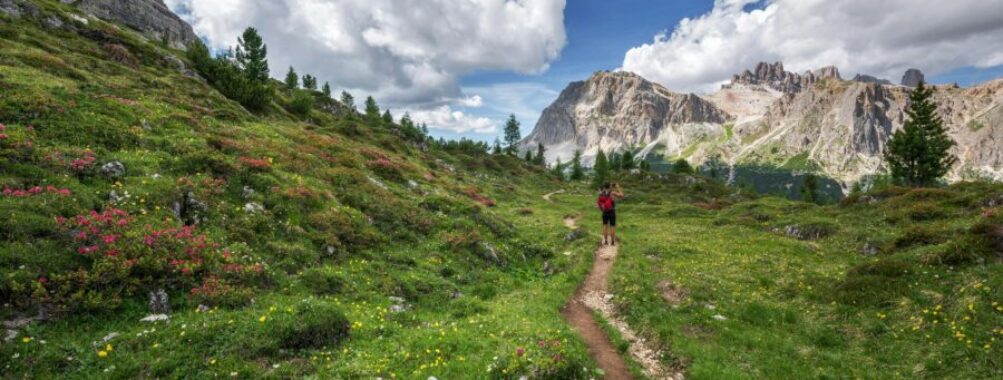
Spiritual Trekking Itinerary for Europe: 7 Sacred Paths to Transform Your Soul in 2025
If you’re thinking about a spiritual trek through Europe, trust me, it can turn an ordinary vacation into something genuinely life-changing. These old pilgrimage routes aren’t just about putting one foot in front of the other—they’re about connecting with cultures and finding those rare, quiet moments for personal reflection. Walking Europe’s spiritual paths means you’ll get breathtaking landscapes and, if you’re open to it, a kind of inner journey that might just bring you a surprising sense of clarity.
From Spain’s legendary Camino de Santiago to the lesser-known trails winding through Sicily’s heart, Europe’s pilgrimage routes have something for every kind of seeker. You don’t have to be religious—honestly, most travelers just want to unplug from the grind and rediscover themselves among wild beauty and centuries of stories.
Contents
- Key Takeaways
- Planning Your Spiritual Trekking Itinerary for Europe
- Choosing the Right Pilgrimage Route
- Essential Preparation Tips
- Best Times for Spiritual Hiking Journeys
- Iconic Pilgrimage Routes in Europe
- Camino de Santiago and the Way of St. James
- Via Francigena: Canterbury to Rome
- St. Olav’s Way and Nordic Spiritual Paths
- St. Cuthbert’s Way and Northeast England Trails
- Spiritual Destinations and Sacred Sites
- Sanctuaries and Cathedrals Along the Routes
- Monasteries and Ancient Religious Retreats
- UNESCO World Heritage Spiritual Sites
- Experiencing the Natural Beauty of European Routes
- Scenic Landscapes and Nature Highlights
- Mountain Passes and Valleys
- Quiet Trails for Meditation and Mindfulness
- Cultural and Historical Experiences on the Trail
- Historic Towns and Landmarks
- Local Traditions and Spiritual Practices
- Key Stops and Destinations for Spiritual Seekers
- Assisi and the Legacy of St. Francis
- Lourdes, Fátima, and Marian Pilgrimage Centers
- Vatican City and Major Italian Pilgrimage Points
- Hidden Gems and Off-the-Beaten-Path Spiritual Treks
- Iona, Scotland: Celtic Christian Heritage
- Mount Athos: Orthodox Monastic Peninsula
- Glastonbury and English Mystical Sites
- Lindisfarne and the Holy Island
- Accommodation and Practical Logistics for Pilgrims
- Unique Lodging Experiences
- Pilgrim Hostels and Traditional Refuges
- Planning Stays in Monasteries and Retreat Centers
- Tips for Personal Reflection and Spiritual Growth
- Practices for Daily Reflection
- Journaling and Introspection
- Embracing Transformation on the Road
- Travel Essentials and Safety Considerations
- Navigation and Resource Planning
- Health, Safety, and Respectful Conduct
- Frequently Asked Questions
- What are the lesser-known pilgrimage routes in Europe for a unique spiritual journey?
- How can one balance the physical challenges and spiritual goals while trekking through European caminos?
- What are the essential items to pack for a reflective and transformative trekking experience in Europe?
- Could you recommend season-specific advice for embarking on spiritual treks across Europe?
- How does one fully immerse in the cultural and historical aspects of European spiritual trails?
- What are some tips for solo travelers seeking a contemplative trek on European pilgrimage paths?
- More Travel Guides
Key Takeaways
- Pilgrimage routes in Europe offer real moments for self-reflection, all while you’re surrounded by some of the continent’s most gorgeous scenery.
- The Camino de Santiago in Spain and the Via Francigena from England to Italy stand out as two of Europe’s most transformative spiritual treks.
- Local hospitality, cultural immersion, and layers of history add way more depth than just the physical challenge.
Planning Your Spiritual Trekking Itinerary for Europe
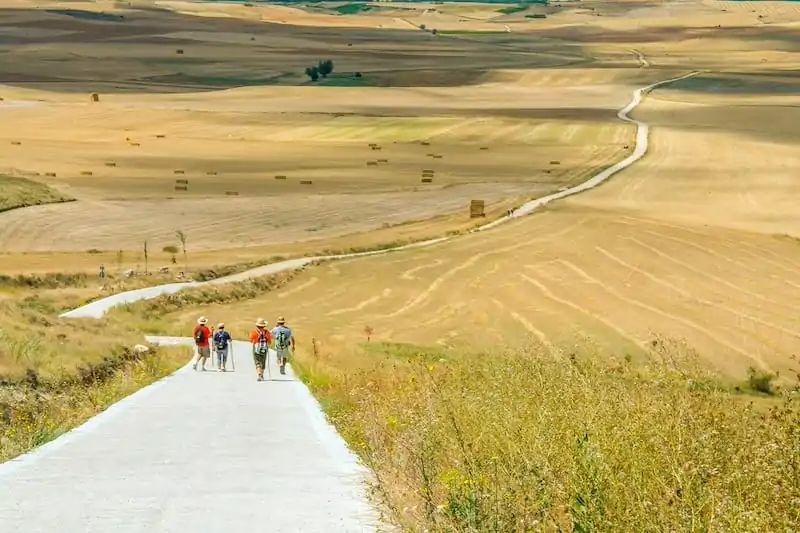
Mapping out a spiritual trek in Europe takes some thoughtful consideration—routes, prep, timing, all that. The choices you make can turn a simple walk into a pilgrimage that feeds your body and your soul.
Choosing the Right Pilgrimage Route
The Camino de Santiago tops the list for most folks, especially the “Camino Francés” if you’re new to this. If you’re short on time, the last 100km from Sarria to Santiago de Compostela gets you the certificate—and honestly, that stretch is packed with camaraderie.
Craving something quieter? The Via Francigena from Canterbury to Rome winds through less-trodden scenery and sidesteps the crowds.
St. Olav’s Way in Norway is perfect if you want to be mostly alone with your thoughts, surrounded by fjords and mountains that’ll make you stop and just stare.
Pick a route that matches what you’re after. Are you chasing history, a physical test, or deep spiritual insight? Some trails will push your body, others will pull you into local culture.
Essential Preparation Tips
Start walking, and do it early—at least three months out. Begin with short strolls, then work up to 15-20km days with the pack you’ll actually use.
Seriously, pack light. I’ve seen so many first-timers lug around way too much. You’ll need:
- Well-broken-in hiking boots
- Two or three sets of quick-dry clothes
- Lightweight rain jacket
- Small first aid kit (blisters are inevitable)
- Refillable water bottle
If you’re traveling in peak season, book beds ahead—especially on the Camino. Pilgrim hostels (albergues) are basic but cheap, and you’ll meet some fascinating people.
Learn a handful of local phrases. Even a little effort goes a long way, and locals will usually warm right up.
Best Times for Spiritual Hiking Journeys
Spring (April-June) and fall (September-October) are the sweet spots for most routes—mild weather, beautiful landscapes, and fewer crowds.
Summer means long days, but, wow, southern routes like the Camino can get brutally hot. If you’re set on summer, start walking before sunrise to dodge the worst of the heat.
Winter treks are for the brave. You’ll find solitude, but snow and rain can shut down mountain paths and make finding a bed a real challenge.
Try to time your arrival in big destinations with local festivals or holy days. Arriving in Santiago during a feast day or Rome in a Jubilee year? That’s a whole different level of energy.
Weather can shift wildly across Europe, so dig into the details for your specific route.
Iconic Pilgrimage Routes in Europe
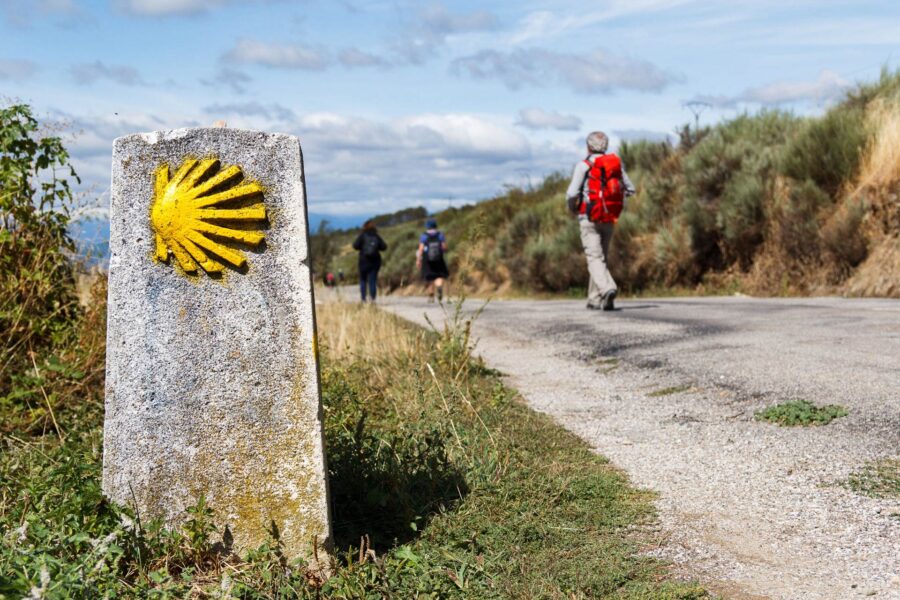
Europe’s spiritual paths have carried pilgrims for centuries, blending physical challenge with the kind of transformation you can’t always predict. These trails lead you through landscapes and cultures you just can’t get from a tour bus.
Camino de Santiago and the Way of St. James
The Camino de Santiago stands as Europe’s best-known pilgrimage, with routes converging at the grand Cathedral of Santiago de Compostela in Spain. The Camino Francés, the classic route, stretches about 500 miles from the French Pyrenees to Spain’s northwest.
Summer can be a madhouse on the Camino, so if you want a quieter walk, go in spring or fall. The Camino Primitivo is tougher, more mountainous, and sees fewer people.
The Camino Portugués, starting in Lisbon or Porto, offers coastal views and a gentler walk. Every route has its own vibe, but those yellow arrows keep you pointed toward Santiago.
You’ll find a real sense of community here. “Peregrinos” often build deep friendships, sharing stories over simple meals in communal hostels.
Via Francigena: Canterbury to Rome
The Via Francigena links Canterbury Cathedral to Rome, spanning about 1,200 miles through England, France, Switzerland, and Italy.
You’ll probably see far fewer fellow pilgrims than on the Camino, making it a more solitary adventure. The path winds over the Alps and down through Tuscany before ending at St. Peter’s Basilica.
Along the way, you’ll pass medieval churches, tiny villages, and historic monasteries that have welcomed travelers for a thousand years. The terrain shifts from gentle English fields to some serious Alpine climbs.
Accommodation isn’t as plentiful as on the Camino, so you’ll need to plan ahead. Local tourist offices can help you find everything from pilgrim dorms to family-run inns.
St. Olav’s Way and Nordic Spiritual Paths
St. Olav’s Way, Norway’s answer to the Camino, leads you to Nidaros Cathedral in Trondheim by following the footsteps of King Olav.
The main trail runs about 400 miles from Oslo, winding through jaw-dropping fjords, forests, and farmland. Summer is the sweet spot here—wildflowers everywhere, and daylight that seems to last forever.
You’ll find rustic shelters and farm stays along the way. Look for St. Olav’s cross to keep you on track.
If solitude is what you’re after, this is it. Hours can go by without seeing another soul, leaving you with nothing but your thoughts and Norway’s wild beauty.
St. Cuthbert’s Way and Northeast England Trails
St. Cuthbert’s Way is a shorter trek—just 62 miles—but it packs in plenty of meaning as it crosses Northeast England into Scotland. The trail honors a 7th-century saint who lived as a hermit on Lindisfarne.
You’ll start in Melrose, Scotland, and cross the Eildon Hills before reaching Holy Island, which tides cut off twice daily. Don’t forget to check the tide tables before your crossing!
The route leads through Northumberland National Park and past Hadrian’s Wall. Stone crosses and old monuments pop up along the way, reminding you of the region’s spiritual roots.
You’ll likely see fewer pilgrims here, but the trail’s well-kept, and cozy B&Bs in villages make for comfortable stops. The terrain is manageable, so it’s a great pick for your first pilgrimage.
Spiritual Destinations and Sacred Sites
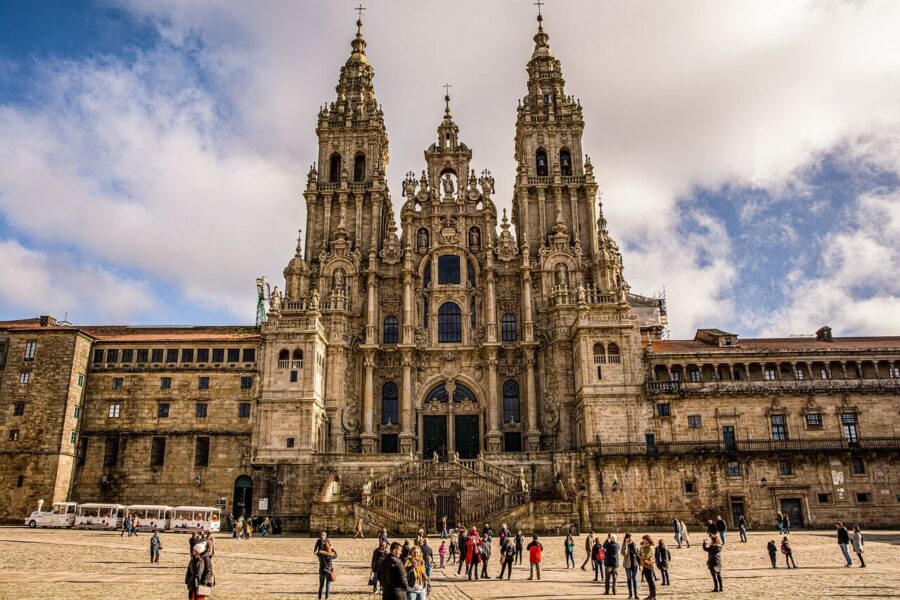
Europe is scattered with powerful spiritual landmarks that have drawn seekers for ages. These places aren’t just pretty—they’re spaces where you can pause, breathe, and maybe find some inner peace.
Sanctuaries and Cathedrals Along the Routes
The Cathedral of Santiago de Compostela marks the iconic finish line of the Camino. Its ornate Romanesque design and spiritual pull can hit you hard when you finally step into the plaza.
Gothic wonders like Notre Dame in Paris or Cologne Cathedral in Germany rise up like stone prayers. There’s something about the light filtering through stained glass that you really have to experience in person.
Along the Via Francigena, you’ll stumble upon humble pilgrimage churches in villages like Fidenza, Italy. These small chapels offer quiet corners where you can sit, think, and sometimes have the place all to yourself.
Monasteries and Ancient Religious Retreats
Meteora in Greece almost looks unreal, with monasteries perched atop giant rocks. Since the 14th century, monks have called these dramatic retreats home—a wild blend of spirituality and nature.
Mont Saint-Michel in France seems to float between sea and sky. At high tide, it’s like a dream. Walking its ancient paths connects you to centuries of pilgrims who found peace within its walls.
Melk Abbey in Austria offers a Benedictine oasis of calm. The yellow baroque buildings hold centuries of stories, and the monks still greet spiritual travelers with genuine warmth.
UNESCO World Heritage Spiritual Sites
Skellig Michael, off Ireland’s coast, is a windswept island with the ruins of a 6th-century monastery. You’ll need to brave a boat trip and a steep climb, but the Atlantic views and spiritual energy are worth every step.
Assisi, home of St. Francis, blends spiritual legacy with UNESCO status. The Basilica’s frescoes are stunning, but the whole town just radiates peace.
The Sacri Monti of northern Italy are a network of chapels set in the Alps—miniature Jerusalems for pilgrims who couldn’t make it to the Holy Land.
In Sicily, the Valley of the Temples shows off Greek temples later used by early Christians. It’s a reminder that sacred spaces can cross all sorts of boundaries.
Experiencing the Natural Beauty of European Routes

Europe’s pilgrimage trails aren’t just about the spiritual—they’re a front-row ticket to some of the continent’s most spectacular natural landscapes. Whether you’re hugging a coastal cliff or crossing an Alpine pass, these routes invite you to slow down and really look around.
Scenic Landscapes and Nature Highlights
The Welsh coastline pilgrimage mixes wild cliffs with sandy beaches—honestly, it’s hard not to stop every few minutes just to take it all in. The Pembrokeshire coast’s crashing waves make for a pretty epic soundtrack.
Sicily’s interior routes are a different kind of beautiful. You’ll wander through rolling fields that shift from gold to green, depending on the season. The trek from Palermo to Agrigento covers 186km of ever-changing scenery.
On the Camino de Santiago, the landscapes change constantly—vineyards, forests, open plains. Even after weeks of walking, you’ll find new views around every bend.
Mountain Passes and Valleys
The Swiss Alps offer some of the most dramatic settings for a spiritual trek. The Great St. Bernard Pass, at over 2,400 meters, has challenged pilgrims for centuries. Up here, the air is crisp and the views seem to stretch forever.
Alpine valleys have their own magic—peaceful meadows, wildflowers, and the gentle clang of cowbells. It’s hard not to feel at ease here.
Tuscany’s hills are less intimidating than the Alps but just as enchanting. Cypress-lined paths, endless vineyards, and those misty mornings make for a dreamy walk.
Quiet Trails for Meditation and Mindfulness
If mindfulness is your thing, the lesser-known routes are pure gold. Welsh Celtic paths, ancient standing stones, and hidden coves offer real chances for quiet reflection.
Try walking before dawn for a sunrise you’ll never forget. The shifting colors from a mountain ridge can turn a simple walk into a meditative experience.
Many routes have built-in rest spots—stone benches with killer views or tiny chapels tucked into the woods. These are perfect for a quiet pause or a bit of journaling.
Streams and rivers along the way provide that soothing background noise that makes it easier to clear your mind. Some folks carry a small notebook to jot down whatever insights bubble up during these peaceful breaks.
Cultural and Historical Experiences on the Trail
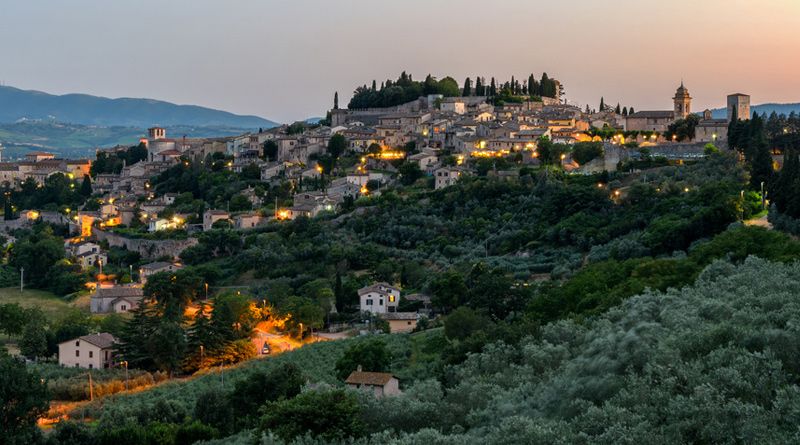
European pilgrimage routes? They’re a whole lot more than just pretty hikes. These ancient paths are layered with centuries of stories, quirky traditions, and sacred sites. As you wander, you’ll stumble across everything from grand monuments to the tiniest customs that have quietly shaped European spirituality.
Historic Towns and Landmarks
The Camino de Santiago snakes through medieval towns where you might feel like you’ve stepped straight out of the 14th century. In Oviedo, Spain, you can duck into a Gothic cathedral that holds holy relics venerated by pilgrims since the 9th century. Don’t forget to snag your “compostela” stamp—it’s a rite of passage.
The Franciscan Way in Italy winds right through Assisi, where St. Francis was born. Inside the basilica, Giotto’s frescoes leap off the walls, telling the story of this radical saint. It’s not just art; it’s a living biography in color and plaster.
Bosnia’s Sufi Trail reveals ancient tekkes (lodges) that still pulse with mystical Islamic traditions. Some of these places quietly continue as spiritual centers, inviting you to step inside and just listen.
If you follow the Canterbury-Rome route, you’ll pass through tiny Alpine villages. Romanesque churches here often surprise with their hidden artistic gems. Sometimes these little chapels feel more charged with spiritual energy than the grand cathedrals everyone talks about.
Local Traditions and Spiritual Practices
Each region along these routes keeps its own spiritual flavor alive. In northern Spain, you might catch the “blessing of the pilgrims”—a daily ceremony where priests sprinkle holy water and chant ancient prayers for travelers.
Don’t overlook the food rituals. The “tarta de Santiago” (almond cake) comes stamped with the Cross of St. James, a recipe that’s been around since medieval times. Many hostels still serve communal meals, and honestly, sharing a table with strangers-turned-friends is half the magic.
Water is a big deal on these trails. Sacred wells and springs—some linked to healing legends—invite you to join in rituals like washing or sipping the water. If you pass through the Swiss Alps, look for springs where locals still leave tiny offerings for safe passage.
You might get invited to join impromptu singing circles or sunrise meditation sessions with other pilgrims. These spontaneous gatherings? They’ve become beloved, unofficial traditions along the way.
Key Stops and Destinations for Spiritual Seekers
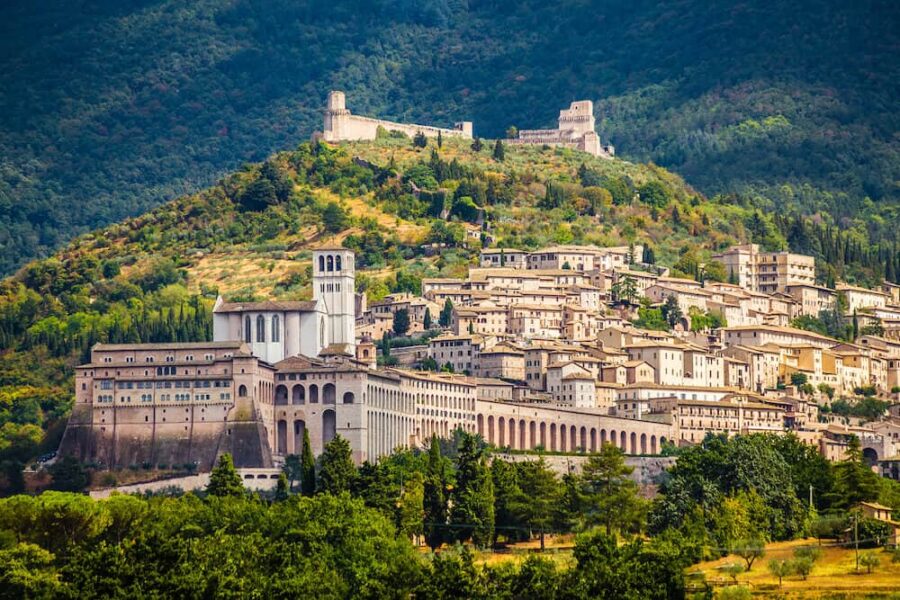
Europe’s spiritual sites can be jaw-dropping—sometimes literally. These places blend history, faith, and architecture in ways you won’t find anywhere else. They’re not just for the devout; even skeptics come away moved.
Assisi and the Legacy of St. Francis
Assisi, perched in Umbria’s rolling hills, radiates a calm that’s hard to describe. It’s the birthplace of St. Francis, and you can almost feel the peaceful energy as you wander the cobbled lanes.
The Basilica of St. Francis dominates the skyline. Giotto’s frescoes inside tell the saint’s story in vivid detail. Take a moment to sit quietly in the lower basilica, where St. Francis rests—plenty of people say they sense something special here.
The Via di Francesco (St. Francis Way) lets you literally walk in his footsteps. You don’t have to commit to the full 550 kilometers—even a short stretch gives you a taste of his love for nature and simplicity.
Pop into the Porziuncola chapel, tucked inside Santa Maria degli Angeli Basilica. This tiny spot is where the Franciscan Order began, and it’s still a magnet for seekers.
Lourdes, Fátima, and Marian Pilgrimage Centers
Lourdes, down in southern France, draws millions each year. The grotto where Bernadette saw the Virgin Mary in 1858? It’s got an atmosphere you really have to feel for yourself.
Stick around for the evening candlelight procession—thousands of people moving together, singing hymns by candle glow. Some come hoping for healing in the famous spring waters, but even if you’re just curious, the collective hope is contagious.
Fátima in Portugal is quieter, more contemplative. The Chapel of Apparitions sits where three shepherd kids saw visions in 1917. The square can hold thousands, but it often feels oddly intimate during prayer.
Both sites are accessible for all mobility levels. Even if you’re not religious, watching the devotion here gives you a window into faith that’s very much alive.
Vatican City and Major Italian Pilgrimage Points
Vatican City might be tiny, but it delivers a spiritual punch that’s hard to match. St. Peter’s Basilica is massive—step inside and you’ll see why people stand in awe. Michelangelo’s Pietà is tucked away here too. Try to arrive early if you want to dodge the biggest crowds.
The Vatican Museums? They’re stuffed with art, but the real showstopper is the Sistine Chapel. Even with the crowds, find a quiet spot and just look up for a while.
Italy’s full of lesser-known spiritual gems. The Holy House of Loreto claims to be Mary’s actual house, flown in from Nazareth. In Puglia, Monte Sant’Angelo’s cave is said to be where the Archangel Michael appeared.
If you want something different, visit San Giovanni Rotondo. Padre Pio, a modern mystic, lived here—and his shrine still draws people seeking healing and hope.
Hidden Gems and Off-the-Beaten-Path Spiritual Treks
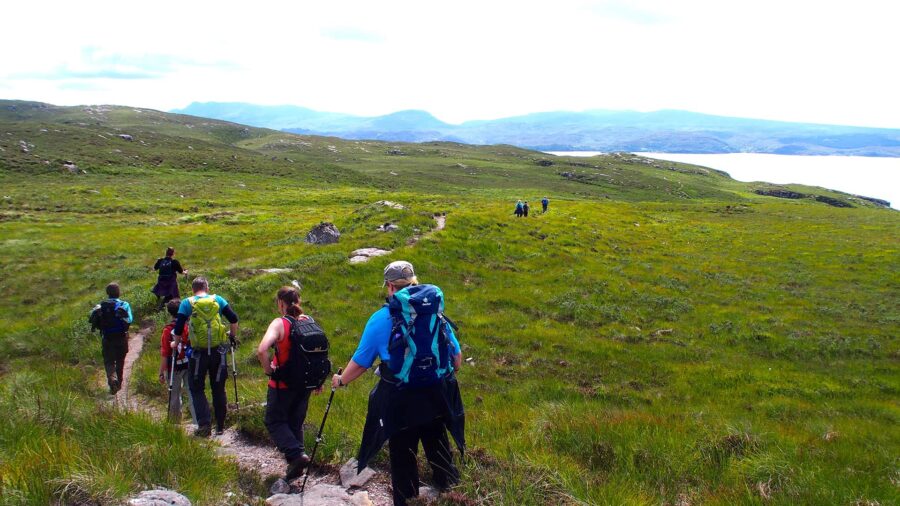
Europe’s got spiritual hideaways that most people never hear about. If you want depth and a break from the crowds, these spots deliver.
Iona, Scotland: Celtic Christian Heritage
Iona, off Scotland’s ragged west coast, is tiny but mighty. St. Columba set up his monastery here in 563 CE, and the island’s been a spiritual hotspot ever since.
The abbey, rebuilt from stone, stands at the heart of the island. Even if you’re not religious, you can’t help but feel the centuries of prayer that have soaked into these walls.
One of the best things you can do? Walk the “Pilgrim’s Way” barefoot, just like the monks once did. You’ll cross sheep-filled fields and pass ancient Celtic crosses along the way.
Stay overnight if you can. Once the day-trippers disappear, the island’s quiet is almost otherworldly. Sunrise meditation at St. Martin’s Cross? Not a bad way to start your day.
Mount Athos: Orthodox Monastic Peninsula
Mount Athos juts into the Aegean Sea like a finger, covered in ancient monasteries that cling to cliffs and forests. It operates as its own little monastic republic, and life here moves to the slow beat of Byzantine time.
Heads up: Only men can visit, and you’ll need a special permit (called a diamonitirion). They only let in a handful of non-Orthodox visitors each day, so plan way ahead.
You’ll hike between monasteries on foot, often for hours, and monks invite visitors into their daily routines—think pre-dawn prayers and simple, hearty meals. Many of these communities have been here since the 10th century.
The trek from Karyes to Simonopetra Monastery takes about seven hours and rewards you with jaw-dropping views and a rare kind of solitude.
Glastonbury and English Mystical Sites
Glastonbury is a quirky blend of Christian and pagan vibes. The ruined abbey once stood among Europe’s most powerful religious sites.
Climbing Glastonbury Tor gives you sweeping views and puts you in touch with centuries of legend—some say it’s a gateway to another world.
Chalice Well Gardens invite quiet reflection beside iron-rich waters that never stop flowing. Pilgrims have been drawn here for centuries, seeking who-knows-what.
Nearby, Stonehenge and Avebury let you tap into even older layers of spiritual tradition. If you’re up for it, combine these sites for a trek through England’s mystical past.
Don’t skip the White Spring Temple across from Chalice Well. It’s candlelit, underground, and has a vibe all its own.
Lindisfarne and the Holy Island
Lindisfarne, sometimes called Holy Island, connects to England’s mainland via a causeway that vanishes with the tide. Always check those tide tables!
St. Aidan founded the priory here in 635 CE, and later, monks created the ornate Lindisfarne Gospels. The ruins still stand, echoing with history.
Walking the Pilgrim’s Path across the tidal mudflats is both meditative and a little bit wild. Wooden poles mark the route, just as they did for monks centuries ago.
If you’re heading this way, stop at Melrose Abbey en route for another taste of Celtic Christian history.
The local museum displays replicas of the gospels and St. Cuthbert’s treasures. For the real magic, stay overnight after the crowds leave—the silence is something else.
Accommodation and Practical Logistics for Pilgrims
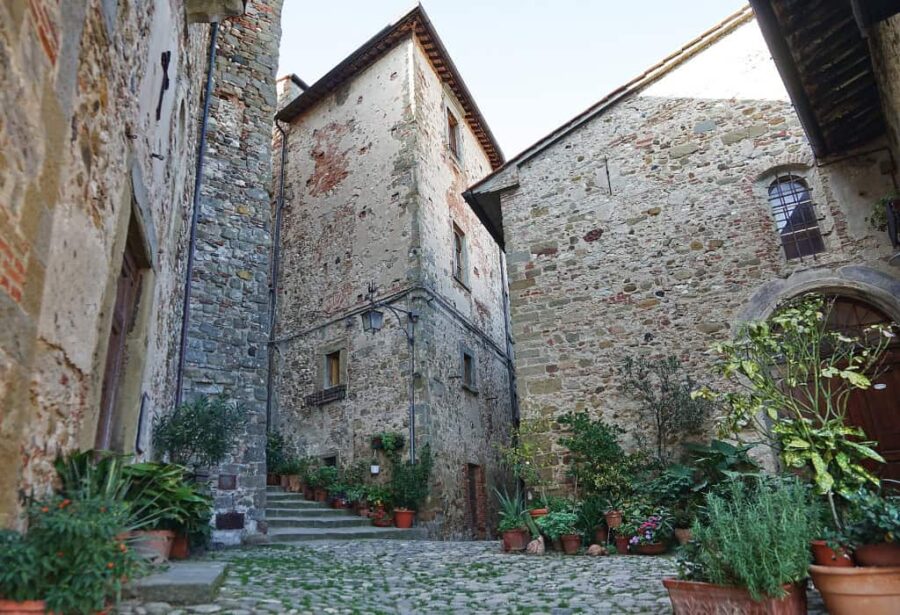
After a long day on the trail, where you sleep matters more than you’d think. European pilgrim routes offer all sorts of stays, and the right one can add a whole new layer to your journey.
Unique Lodging Experiences
You’ll find some real gems along these paths—think centuries-old inns on the Camino de Santiago, where the medieval atmosphere is as real as the stone walls. On Italy’s Via Francigena, you could end up in a converted watermill or a farmhouse where dinner comes straight from the garden.
Albergues in Spain are a classic. These communal hostels draw pilgrims from every corner of the globe, and the conversations over shared meals often become the highlight of the trip.
Book unique accommodations early, especially if you’re traveling between April and October. Some of the best places fill up months ahead, so don’t wait if you’ve got your eye on something special.
Pilgrim Hostels and Traditional Refuges
Pilgrim hostels—called albergues or refugios—are the backbone of routes like the Camino. They’re affordable, usually €5–15 a night, and you’ll sleep dorm-style. Most run on a first-come, first-served basis, so plan to arrive by early afternoon if you want a bed.
Expect communal kitchens, basic washing and drying facilities, and shared bathrooms. WiFi is usually available, but don’t count on it being fast or reliable.
Some refuges still stick to old-school traditions: curfews, early morning departures, and group dinners. These routines might sound strict, but they build a sense of camaraderie that sticks with you.
Pack a sleep sheet and a quick-dry towel. Most hostels provide blankets, but having your own linens is just smart for hygiene.
Planning Stays in Monasteries and Retreat Centers
Monasteries can completely change the flavor of your pilgrimage. Many open their doors to travelers for overnight stays or longer retreats. You’ll get a glimpse of monastic life and a level of peace that’s hard to find elsewhere.
You’ve got to book these in advance—sometimes months ahead. Reach out by email or phone, since a lot of monasteries skip the big booking sites. Donations run €30–60 per night, usually with simple meals included.
Be ready for a few house rules: quiet hours (sometimes starting as early as 9pm), modest dress, maybe joining prayers, and often minimal internet. Some monasteries, like Montserrat in Spain or Meteora in Greece, offer spiritual chats with monks or nuns if you ask in advance. Those conversations can be unexpectedly profound.
Tips for Personal Reflection and Spiritual Growth
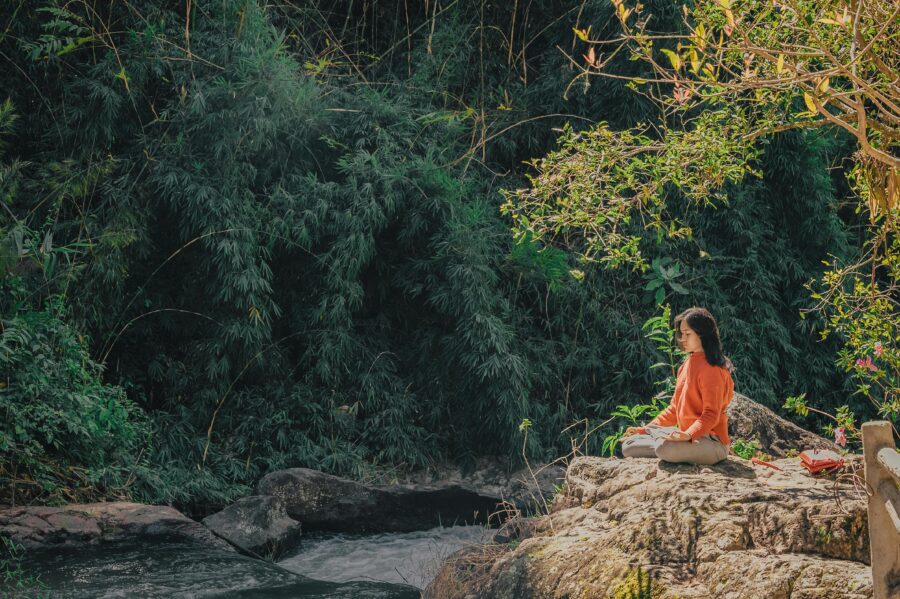
Spiritual trekking isn’t just about covering ground—it’s about carving out space for inner transformation. European trails give you rare chances to disconnect from daily life and reconnect with yourself, if you let them.
Practices for Daily Reflection
Kick off your mornings with a bit of meditation—even 10 minutes of deep breathing and intention-setting can change the tone of your day. On trails like the Camino, the simple act of walking often turns into its own kind of meditation.
Try jotting down three blessings each night before bed. It’s a small ritual, but it nudges your mind toward gratitude instead of aches and blisters.
Mark your journey with little rituals—maybe leave a stone at a special spot, or pause for a moment of silence in a chapel.
Don’t underestimate the power of silence. Take a “silent day” where you skip small talk and unplug from tech. It’s not easy, but it can lead to insights you never saw coming.
Journaling and Introspection
Carry a small notebook just for your spiritual journey. Jotting things down by hand really helps you process whatever emotions and insights bubble up while you’re walking.
Don’t stress about filling pages. Sometimes a quick note, a doodle, or even pressing a leaf between the pages captures a moment better than a long essay.
If you’re staring at a blank page, try a prompt:
- What surprised me today?
- What emotional baggage am I ready to let go of?
- Did I gain a new perspective on today’s path?
Record your dreams! Pilgrims often report that their dreams get more vivid on the road. Maybe it’s the mix of physical tiredness, new places, and a more open mindset—whatever the reason, your subconscious tends to get chatty.
Embracing Transformation on the Road
Growth usually comes with some discomfort. Blisters, bad weather, or unexpected detours? They’re not just obstacles—they teach patience and flexibility if you let them.
Connect with fellow travelers, but don’t ignore your need for quiet. Honestly, some of the biggest “aha” moments sneak up when you’re alone between conversations.
Keep an eye out for personal symbols along the way. Maybe butterflies keep crossing your path, or you feel drawn to a certain church. These little signs can become powerful markers for your transformation.
At big milestones, try a simple “letting go” ritual. Write down what you’re ready to release, then burn the paper or tuck it under a stone. It sounds simple, but these acts can help you mark internal shifts.
Travel Essentials and Safety Considerations
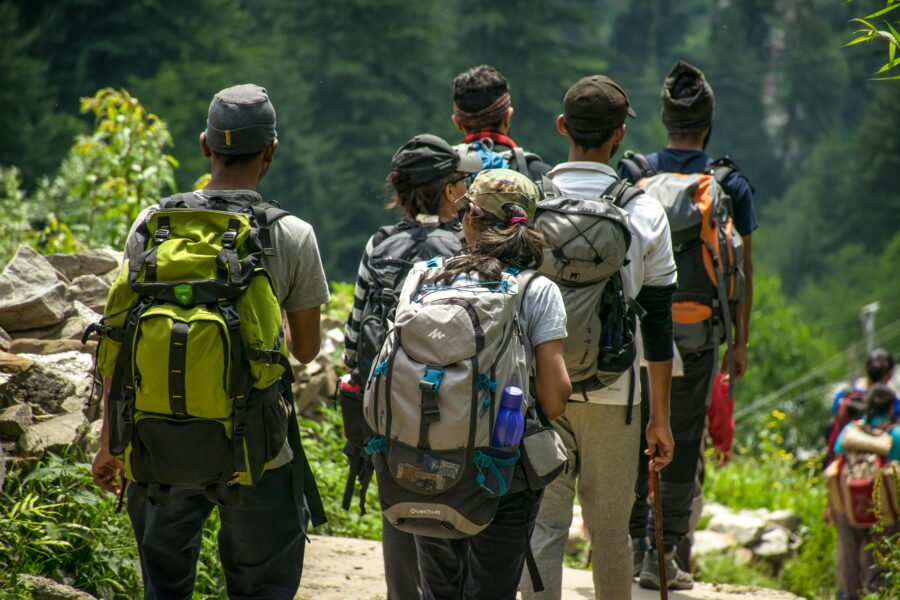
Proper preparation can make or break a spiritual trek across Europe. The way you pack and plan for safety will shape how present you can be on your pilgrimage.
Honestly, I’ve gotten lost on pilgrimage routes, and it’s more draining than you’d expect. Always bring detailed maps—paper and digital. Many routes like the Camino de Santiago have apps now with offline maps, which are a lifesaver.
Pack light, but don’t skimp on the essentials:
- Comfortable, well-broken-in hiking boots
- Layers for unpredictable weather (mountains can surprise you)
- A backpack in the 40-50L range
- Reusable water bottle (at least 1L)
- First aid kit, especially for blisters
- Portable charger for your phone or camera
If you’re walking during peak season (May-September), book your beds ahead of time. Pilgrim hostels, or “albergues,” fill up fast and you don’t want to get stuck without a place to sleep.
Health, Safety, and Respectful Conduct
Your physical health really matters on these treks. Around 55% of hikers suggest going with a guide in less-marked regions—it’s safer and you’ll probably learn more about the culture.
Before you leave:
- Buy travel insurance that covers hiking
- Share your route with someone back home
- Look up local emergency numbers
- Check the weather often
- Learn a few local phrases—just the basics
You’re passing through living communities, not just tourist sites. Take off your shoes in sacred spaces, dress respectfully at religious sites, and always ask before taking someone’s photo. Mute your phone during ceremonies or meditation.
Drink plenty of water and pay attention to your body. If you’re tired or hurting, take a break—the trail isn’t going anywhere. Sometimes resting is the wisest move.
Frequently Asked Questions
Travelers often have a ton of questions before setting out on spiritual treks across Europe. Here’s some practical advice you might not find in the usual guidebooks.
What are the lesser-known pilgrimage routes in Europe for a unique spiritual journey?
Sure, the Camino de Santiago is famous, but plenty of other spiritual paths deserve your attention. The Via Francigena runs from Canterbury to Rome, cutting through England, France, Switzerland, and Italy. It’s breathtaking and less crowded.
St. Olav’s Way in Norway? It’s rugged, winding through fjords and mountains—ideal if you crave solitude and a bit of Nordic magic.
The Pilgrims’ Way to Walsingham in England is shorter but packed with medieval history. You’ll pass through storybook villages and gentle countryside on your way to England’s “Nazareth.”
How can one balance the physical challenges and spiritual goals while trekking through European caminos?
Start your day by setting an intention. Just a few quiet minutes each morning to think about what you want to gain spiritually can make a big difference.
Listen to your body and don’t be afraid to slow down. Some routes even have support vehicles if you need a breather—don’t let pride get in the way of your wellbeing.
Pause deliberately at chapels, scenic overlooks, or quiet spots. These breaks aren’t just for your feet—they help you process the journey on a deeper level.
Create little evening rituals. Maybe you journal or swap stories with other pilgrims. These moments help you digest the day’s experiences.
What are the essential items to pack for a reflective and transformative trekking experience in Europe?
Don’t compromise on your boots—make sure they’re comfortable and broken in. Foot pain can end your pilgrimage faster than you’d think.
Bring a lightweight journal and pen. Writing things down, even if it’s just a line or two, helps you process the journey in real time.
Carry a small token that means something to you—a stone, a medallion, whatever feels right. It’s a tangible reminder of why you’re walking.
Limit your electronics. Maybe even try a digital detox or set strict “tech hours” so you’re really present. The less distraction, the more transformative your trek becomes.
Dress in layers that work for shifting weather. Staying comfortable physically means you can focus on the spiritual side.
Could you recommend season-specific advice for embarking on spiritual treks across Europe?
Spring (April-May) brings wildflowers and that sense of renewal, but pack for rain. The upside? Fewer crowds and more quiet.
Summer (June-August) means lots of daylight and social energy, but you’ll need sun protection and extra water. Some routes get really busy, which changes the vibe—sometimes for better, sometimes not.
Fall (September-October) is all about colorful leaves and harvest festivals. Cooler temps make for great walking, especially farther south.
Winter (November-February) is possible on some southern routes like parts of the Via Francigena. The landscapes turn stark and peaceful, but you’ll need to prep seriously for the cold and shorter days.
How does one fully immerse in the cultural and historical aspects of European spiritual trails?
Dig into the history of your route before you go. Knowing why people have walked these paths for centuries adds a whole new layer to your journey.
Learn a few words in the local language. Even simple greetings can open doors to deeper conversations and connections.
Visit local churches, monasteries, and historic spots along the way. Many of these places have been welcoming pilgrims for generations and offer unique rituals or blessings.
Try the regional food and join in local traditions if you can. Food and festivals are a huge part of the pilgrimage experience.
Chat with local residents about what the path means to their community. Their stories often reveal gems you’ll never find in any guidebook.
What are some tips for solo travelers seeking a contemplative trek on European pilgrimage paths?
Listen to your gut when it comes to safety, but don’t shut yourself off from those unexpected, meaningful encounters along the way. Solo travel really heightens your awareness—of the world outside and, honestly, of what’s going on inside your own head.
Let yourself settle into a walking rhythm that feels right for you. There’s nobody to keep up with or slow down for, so you can find a pace that actually encourages reflection.
Try booking a night or two in traditional pilgrim lodgings—think monasteries or old guesthouses tucked away from the crowds. I find these places offer a kind of quiet you just won’t get in your average hostel.
Bring along a slim book of poetry or something inspirational. It sounds a bit old-school, but dipping into a few lines each day can really anchor your thoughts when you’re out there solo.
Mark your milestones with your own little rituals. Light a candle, jot a note, or just pause and breathe—these habits become your private waypoints when there’s no one else around to share the moment.



